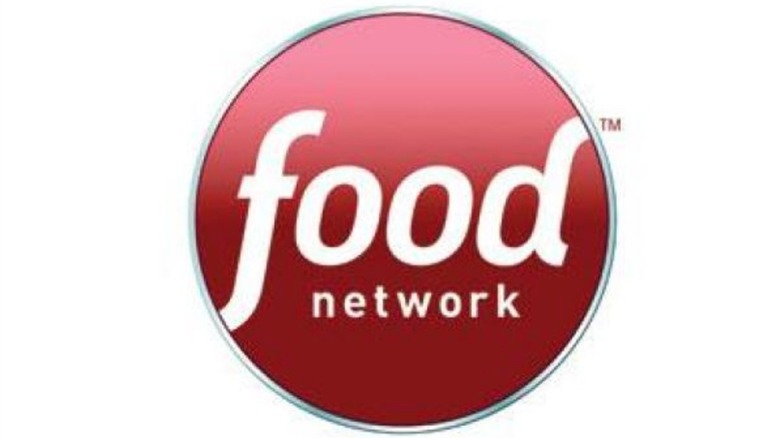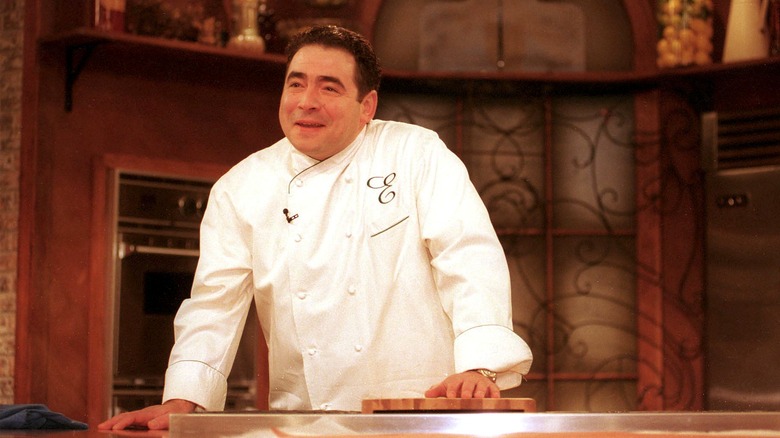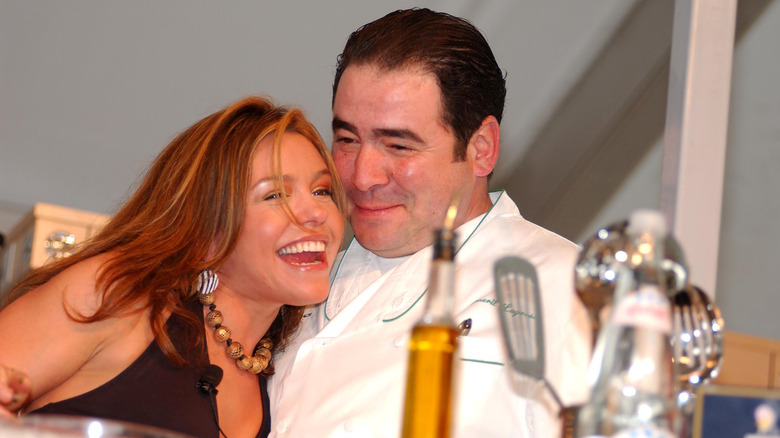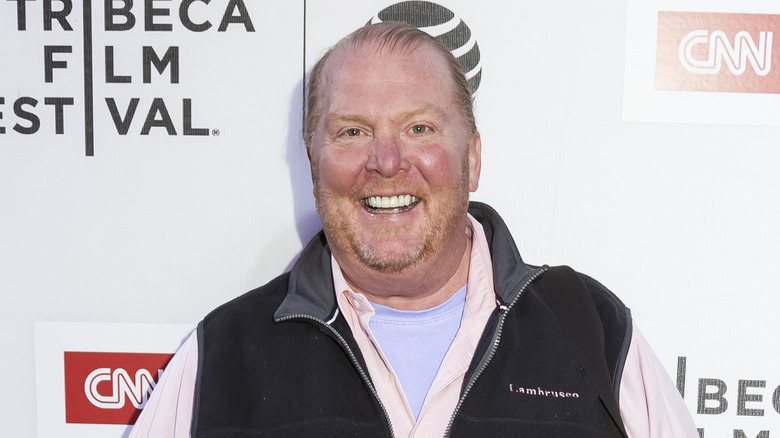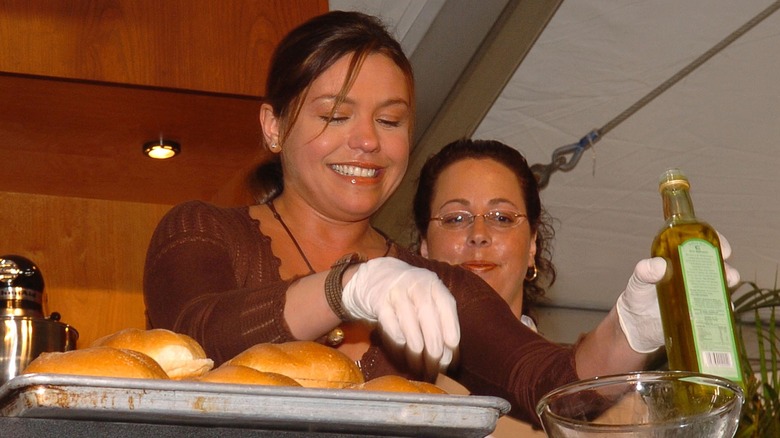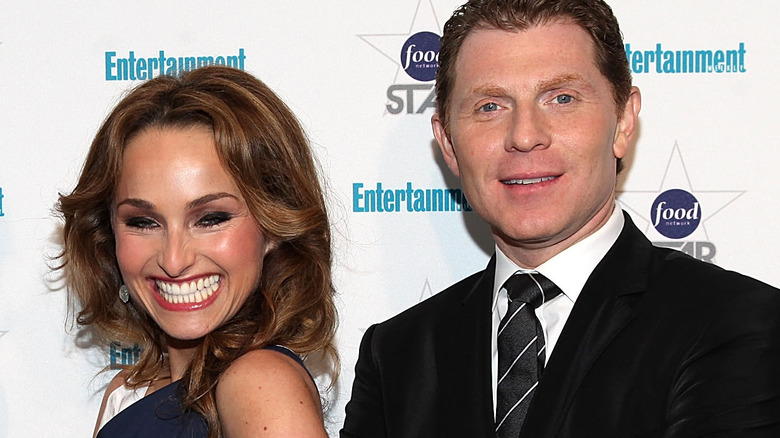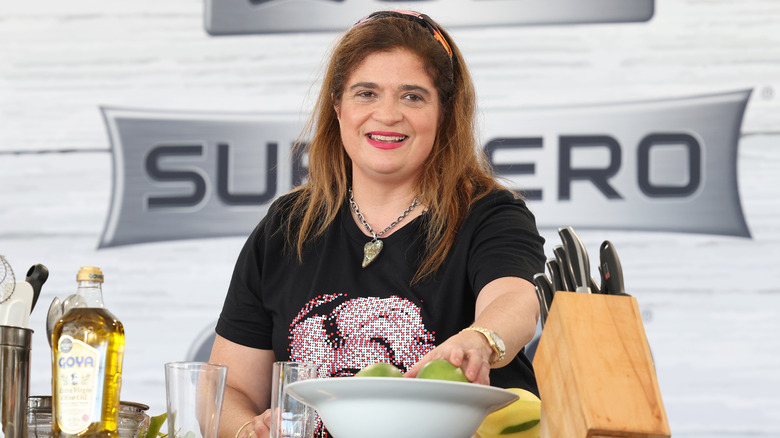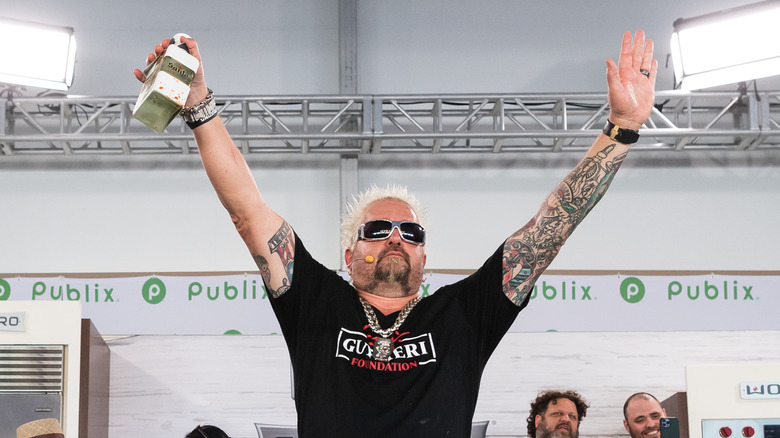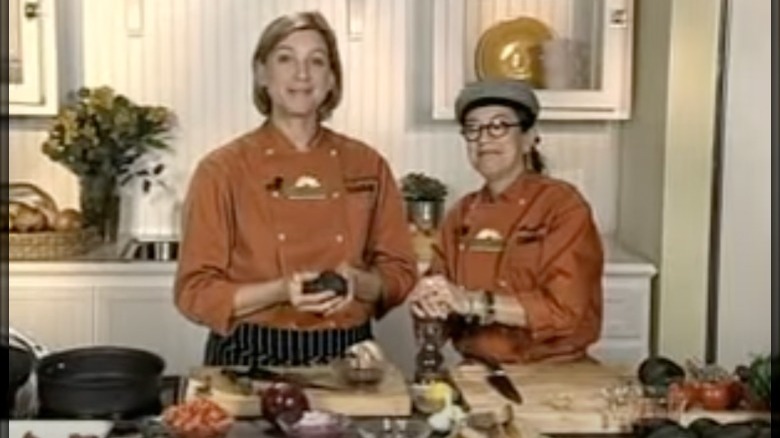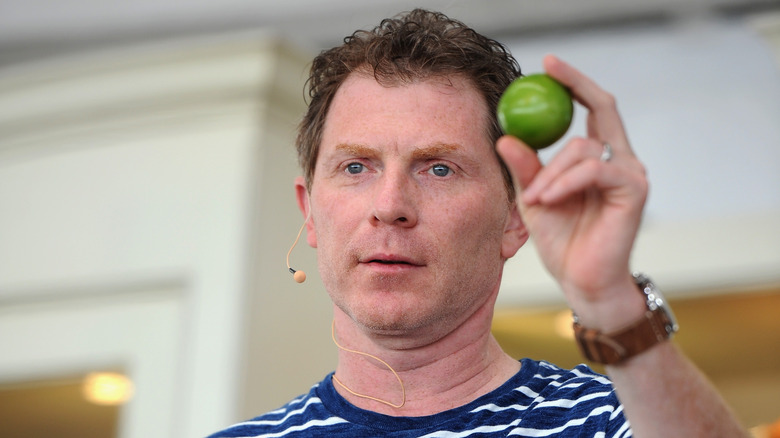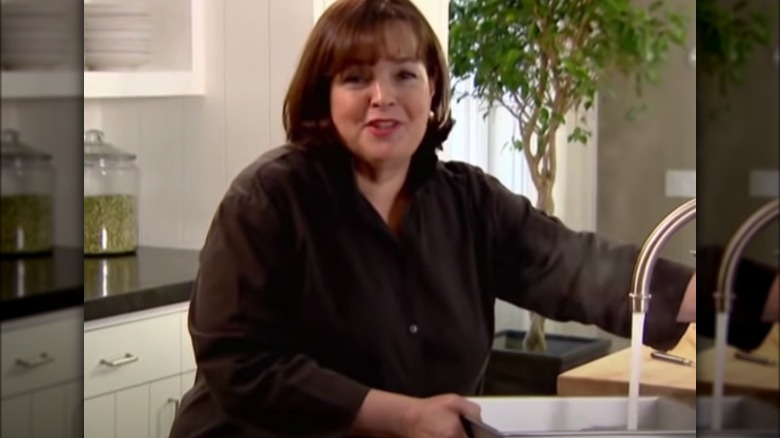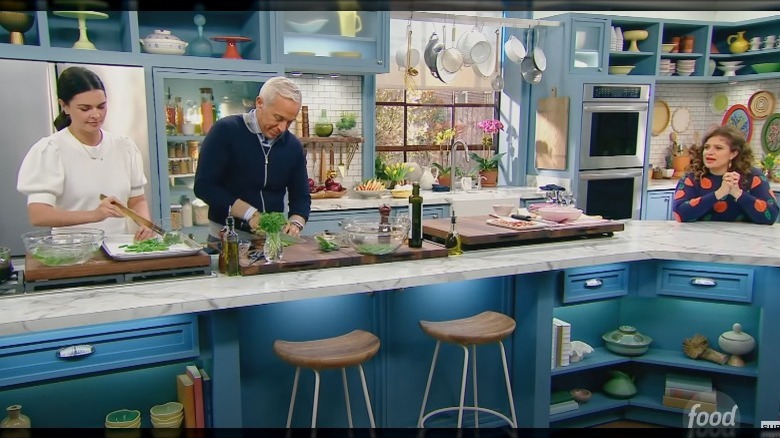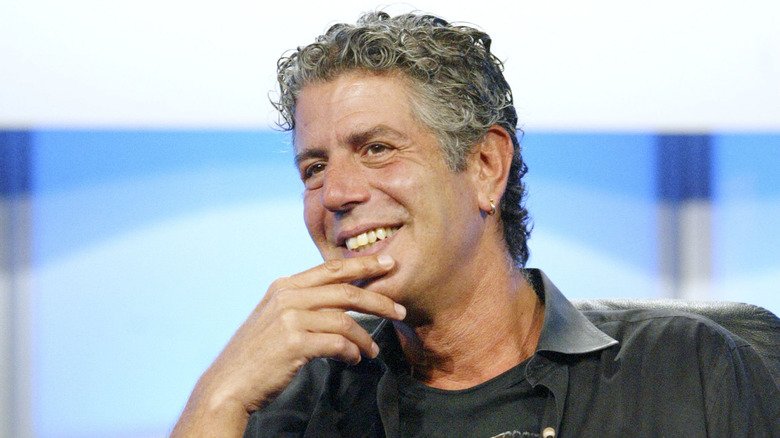The Untold Truth Of Food Network
Since its inception, Food Network has brought viewers around the world a more beautiful relationship with food. Through its creative programming, it's shown food lovers how to "Kick it up a notch" thanks to Emeril Lagasse; proven any ingredient can be made into a gourmet dish on "Iron Chef;" it's taught us the science of food courtesy of Alton Brown, and shown us how our favorite packaged foods are made on "Unwrapped" plus so, so much more.
We've learned the secrets of restaurants across America and have fallen in love with the cooks brave enough to film themselves creating food magic live on the air. Food Network has given us many gifts, but most of our knowledge about the cabler is limited to what we see on TV.
There is so much more to learn about this groundbreaking television network. From the people that run it to the behind-the-scenes secrets, this is the untold truth of Food Network.
Food Network started in 1993
Given how much television has changed in the past 20 years, it's hard to imagine a time when we didn't have our choice of hundreds, if not thousands of different channels, but a time like that did exist. In the early 1990s, a couple of network executives were looking for a new idea for a television network, and they landed on a network entirely dedicated to food.
In 1993, what we now know as Food Network hit cable television. "Wow. A whole channel devoted to that? That's pretty amazing," Chef Emeril Lagasse said when he heard the idea, according to Grub Street. Our sentiments exactly.
The network was originally called Television Food Network, as the name Food Network was already taken. It didn't take long for the network to gain popularity, and within just a couple of years the station, which was run by CNN co-founder Reese Schonfeld and his wife Pat O'Gorman, was garnering millions of viewers every night. As O'Gorman said, "because you always have to eat," per The New York Times.
It could only afford to air original content in the beginning
Before it was raking in millions of viewers and millions of dollars, the company was operating on a small budget and could only afford to air original programming. Chefs wanted a slot on the network because, as noted by some of the leading executives at the time, chefs in the United States weren't making the money that they do now, and appearing on Food Network was a great way to organically advertise for their restaurants.
The show had no problem attracting top talent and received hundreds of audition tapes from chefs aspiring to bring their culinary genius to network television. Not all programming was successful, though and the network had to be creative in its ideas. Some of the network's successful programming included its Chef Du Jour series and "How to Boil Water."
Food Network performed an intense amount of trial and error before landing on shows and chefs that were suitable for network television, like Emeril Lagasse, who according to Grub Street was told by Reese Schonfeld, "The shows that you're producing for us right now are not good. You're fired. But we think that you're a great chef, and a great cook, and potentially could be a great teacher. Come to New York and let's visit. You're just not in the right environment." Schonfeld was right, of course, and Lagasse became a staple of the network for the next decade.
There have been injuries on air
Cooking can be dangerous. Chefs are surrounded by open flames and sharp knives (though anyone familiar with blades will tell you that a dull knife is more dangerous than a sharp one). Cooking is not for the faint of heart.
In an attempt to bring real cooking experiences to life, Food Network has aired real injuries, too. One of its most successful programs, "Chopped," features chefs from around the country competing against each other, and it's resulted in some unfortunate incidents. One competitor, Chef Mor Amitzur, sliced himself while using a food processor, forcing him to start his dish over and receive a lecture from the judges over the mishap.
Chef Amitzur wasn't the first chef on Food Network to suffer an injury on set, though. Back in the '90s when the network was still young, Chef Mario Batali was also injured on set. He took to Larry King (via YouTube) to describe the injury, noting that while grating some carrots, he cut his fingers. "I thought that I would hide them, and I sunk them into a can of tomatoes ... I pulled them out, and blood-red is not tomato-red," he shared.
One chef nearly burned down the studio
Apparently, food processors and graters aren't the only hazards on Food Network sets. Unsurprisingly, the set has faced multiple fire scares. Though we presume the network operates with the utmost caution, where there's fire, there's fire, and on a station that is dedicated to food, chefs are bound to come in close contact with a flame or two.
One of the culprits is famed television chef Rachael Ray. Ray was with the network for years and grew to popularity showing us all that food can be prepared quickly in her famous television show "30 Minute Meals." Before beginning with the network, Ray had to film a test, and she used Emeril Lagasse's set.
Nerves took over Ray, and instead of beginning to cook, she talked, letting her pan become very hot. When she eventually began to cook, she poured oil on the pan, which ignited a large flame and nearly set the set ablaze. "I set Emeril's kitchen on fire!" she exclaimed (via YouTube).
A fire hazard occurred yet again, this time on the "Chopped" set, when a competitor, Chef Gemma Gray, burned her hand on an open flame. Though she didn't nearly set any property on fire, she certainly did some damage to her skin.
Some of the network's chefs have feuded
We like to think that all of the chefs on Food Network are friends who host amazing dinner parties and potluck buffets for each other, but unfortunately, that is not the case. Though some of the chefs are legitimate friends like Ree Drummond and Trisha Yearwood, not all of them are quite so friendly.
On the podcast "Beyond the Plate," Giada De Laurentiis shared that after competing with Bobby Flay and losing "Iron Chef," she felt that he didn't take the competition seriously, and she refrained from speaking to him again for eight months. "More than the loss ... I was upset that he didn't seem to care," De Laurentiis said of Flay's attitude after the competition. The two are close friends now, which De Laurentiis added.
De Laurentiis isn't the only chef that Flay has rubbed the wrong way. During another "Iron Chef" episode, Flay highly offended fellow competitor Chef Masaharu Morimoto, prompting the chef to say of Flay, "By the way, he is not a chef," and scold him for standing on a cutting board (via YouTube). We're not sure if it's Flay or the "Iron Chef'" environment, but either way, he's been in some hot water with other chefs due to the famed competition.
Not every recipe can get made on air
There are several reasons to watch the Food Network, especially now, as after nearly 30 years on air, its programming has expanded so widely. In the beginning, viewers were limited to essentially just watching chefs cook. Presently, the network has stayed true to its roots, but it's also expanded into other programming options, like competition and travel shows.
Despite still having plenty of programming dedicated to improving viewers' skills in the kitchen, there are some recipes we won't see made on Food Network. Unfortunately, some foods just take too long to make. "I had to tell Chef Alex Guarnaschelli ('Alex's Day Off') that she couldn't make the chocolate crostata — sort of Italian chocolate pie — that she wanted to prepare. It just had too many components for a 30-minute show," Food Network producer Ashley Archer told TribLive.
Though we'd love to see Guarnaschelli bake a chocolate crostata, we understand the limitations (sort of). Filming a television show is difficult, especially one with food involved. Take "Chopped," for instance. Though it's not a tutorial-based show, there are several moving parts involved in filming. It takes 12 hours to film a one-hour episode of the show, according to Grub Street, and those chefs aren't baking intricate Italian desserts. Perhaps one day we'll see Guarnaschelli bake her crostata on television, but until then we'll just dream about it.
Guy Fieri is the highest paid Food Network star
Talent manager Shep Gordon once told Grub Street of the pre-Food Network era, "At that time, there wasn't a chef in America making $100,000." Things have certainly changed. Although $100,000 is widely considered a great living, chefs today, particularly those featured on Food Network, have the ability to rake in millions per year.
Some of the highest-paid TV chefs include Bobby Flay and Ree Drummond, according to Forbes, both of whom have starred in multiple programs on the network over the years. However, no Food Network chef is raking in the big bucks quite like Guy Fieri, who signed what's thought to be the largest contract with the network ever, a reported $80 million for three years of work, per Forbes.
Fieri is definitely earning his keep. The Mayor of Flavortown stays busy hosting multiple shows for the network, including "Guy's Grocery Games" and, of course, his famed "Diners, Drive-Ins and Dives," the success of which we imagine played a major part in him earning such a handsome salary.
The station once mistakenly aired porn
Showing injuries on television is one thing, but accidentally airing porn is entirely another. While airing "Too Hot Tamales," a bygone Food Network program hosted by Mary Sue Milliken and Susan Feniger, wires were somehow crossed between the network airwaves and an employee's personal programming, the latter of which was explicit content certainly not meant for cable television.
Milliken and Feniger were cooking a Latin risotto, and three seconds of their tutorial was interrupted by pornography. "We have a broad viewing audience that we really care about, and we hate to think of the shock or embarrassment this may have caused any of our viewers," the ladies said of the mishap according to the Los Angeles Times.
The network was in hotter water than the risotto after the incident and had to pay its penance, but it turned out to be a blessing in disguise. "Actually, it paid off, because it showed the advertisers that there were a lot of people watching us. They were mad, but they were watching us," Jack Clifford, former Food Network CEO, said of the ordeal, according to Grub Street. Who knew we had porn to thank for potentially keeping Food Network afloat?
Food Network does its best to curb food waste
Food waste is an issue in the United States, and by simply watching Food Network, viewers can easily begin to wonder if it's contributing to the problem. Viewers have wondered about one show specifically — "Cupcake Wars."
The program is a competition show where competitors bake an inordinate amount of cupcakes. Though it's fun to watch, it does seem like a major waste of food. A senior challenge producer that worked on the show, Melissa Johnson, said on the Marketplace podcast (via Marketplace) that some of the desserts are often eaten by those on set, but donations can be tricky because there are a lot of "strict rules" so ultimately a lot of it does get tossed out, but in some cases, the winning confections are put on displays at events.
Food Network has also used its programming to address the issue. In 2012, chefs Bobby Flay, Anne Burrell, Michael Symon, and Alex Guarnaschelli hosted "The Big Waste," a special program dedicated to cooking with food that would otherwise go uneaten. Guarnaschelli has also written for the network, sharing tips on how to be more thoughtful with food choices and incorporate ways to minimize food waste at home.
The chefs aren't cooking in their own homes
Though it's quite obvious that some TV chefs are in a studio, take the competitors on "Iron Chef" or the cooks on "The Kitchen” for instance, other cooks seem to be right at home, and we don't mean because of their familiarity around the kitchen. It looks like they're actually cooking in a home kitchen.
But for most TV chefs, that is not the case. Food Network has a studio in Chelsea, New York City, and most of the chefs travel to the Big Apple to film their shows. Emeril Lagasse told Grub Street he used to venture to the city to film over a week's worth of shows in just one day, and Guy Fieri made his "Guy's Big Bite" set a haven of all his favorite things, as explained by Food Network.
One exception is Ina Garten, the Barefoot Contessa, who filmed her show at her Hamptons home, per Buzz Feed News, though she could've easily commuted from Long Island to New York City. Though if we had a kitchen as functional and beautiful as Garten, we'd make a film crew come to us, too.
It's one of the top networks
Former Food Network producer Pat O'Gorman predicted that Food Network would stay popular, according to what she told The New York Times, and she was correct. The station has remained a popular television destination for those who want to learn to cook; find a diner, drive-in, or dive to patronize; or watch a pastry chef's childhood Easter basket come to life. In fact, it's about the only station you can watch if you're interested in all three.
The COVID-19 pandemic shook the world and people landed in front of their television sets, desperate for programming to distract them from what seemed like Armageddon. For some, that was Food Network. "People are gravitating to our networks and talent because we provide more than entertainment right now," Kathleen Finch, a Discovery executive, told AP News in May 2020 of the pandemic-driven success of the network. The network's ratings increased by 25% in April 2020 compared to April 2019.
Food Network remained successful in 2021, despite pandemic restrictions loosening and many viewers returning to their own regularly scheduled programming, thanks to a slew of new shows. "All year long Food Network has been committed to super-serving our audience and inviting new fans to the brand and we are thrilled with our 2021 success," network executive Courtney White stated, via Discovery.
Some of the chefs have left unhappily
Chefs on the network have come and gone, as is the nature of network television, but some chefs have not cut ties with the network so amicably. Both Emeril Lagasse and the late Anthony Bourdain left Food Network unhappily.
Lagasse, as noted, was one of the first chefs to join the station, and he nearly became synonymous with Food Network. Best known for "Emeril Live" and "Essence of Emeril," the man of many catchphrases left the cable network in 2007. "When it ended, everybody felt like it was time for a little break. I didn't necessarily think that, but that's what everybody else thought, that maybe it was time for a break from Emeril," he told GQ, insinuating that he might've stayed longer had he been welcome.
Bourdain, who's better known for "Anthony Bourdain: No Reservations," which aired on Travel Channel, first filmed the show for Food Network called "A Cook's Tour." After two seasons of the first version of the show, he moved networks. It was never publicly announced why Bourdain was leaving, but since he vocalized his thoughts on the network several times after leaving, we assume his exit was on bad terms. "[Ina Garten is] one of the few people on Food Network who can actually cook," he once said, according to Atlanta Magazine. Ouch.
